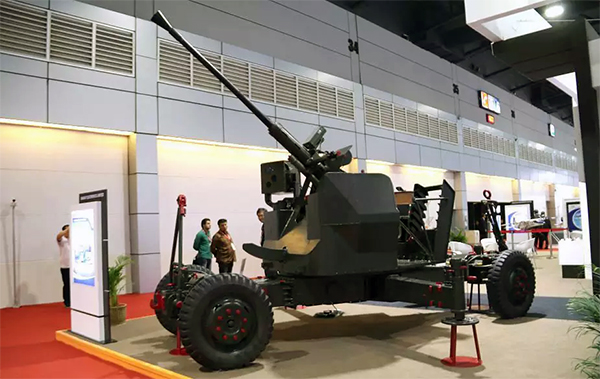Tackling Cross-border Drone Menace
The appearance of new drone-based threats flying across the Line of Control and international boundary have presented a new range of threats to security agencies. Since 2019, Pakistan-based terrorists are using drones to drop arms and ammunition into India.
On June 27, this threat made the next logical step-up—when two drones attacked the Jammu airbase dropping shaped charges which punched through a roof of a building without any casualties. It, however, signalled a clear and present danger—of small-sized drones being used to carry out attacks on sensitive installations and in public gatherings.
BSF personnel open fire at the drones which are launched from within Pakistan but they have no idea if they ever hit them or not.
Pakistan operates drones with GPS coordinates which are pre-programmed for the drone to land at some place or at least reach that place to dump the consignment.
Existing ground-based air defence radars are unable to track commercially obtained drones because of their small size—a one-metre drone has the radar cross-section of a bird and can often be mistaken for one. The successful integration of the counter-drone system with legacy AD systems offers interesting in-country solutions to replace costly imports.
The Army has tested L70 anti-aircraft guns in anti-drone mode against low flying mini rogue drones, firing 40mm shells with proximity fuses.
The system interfaces a counter-drone system made by a Hyderabad-based Zen Technologies with the army’s in-service L-70 air defence gun. It is similar to one ordered by the Indian Air Force in August. The IAF placed a Rs 120 crore order for an unspecified number of counter-drone systems from the same firm.
The Zen-Anti Drone Air Defence Systems or ZADS variant ordered by the IAF, is primarily a ‘soft kill’ system. It detects and jams radio frequency emissions from the drone between 10 metres and 10 kilometres. The firing trials in Gopalpur are the first use of it as a ‘hard kill’ system, where it physically destroys the drone.
The radio frequency detector on the ZADS indicates the direction of the approaching drone, the day and night camera aligns itself towards the target and zoom searches to estimate its approximate range. The system then passes target coordinates on to the L-70 gun through a customised hardware interface. The gun receives the coordinates in ‘remote’ mode, aligns itself towards the target allowing the operator to lock on and fire. And all this in a matter of seconds.
The army can swiftly upgrade older guns like the Swedish L-70s and the Soviet-made ZSU-23 guns into drone killers. The costs are not known but are believed to be in the range of Rs 6 to Rs 8 crore per gun upgrade. The guns have to be first upgraded with an electro-optical system, like the one on the upgraded L-70, before they can be interfaced with the ZADS counter-drone system.
It will also need newer ammunition like the special proximity-fused ammunition manufactured by Bharat Dynamics Ltd (BDL)—each shell is packed with 1,000 fragments of tungsten that are detonated by a proximity fuse.
The army has approximately 1,180 L-70 anti-aircraft gun, made by Swedish arms firm Bofors AB, which were first bought off-the-shelf in the late 1960s and later licensed produced in India. Around 200 guns have been upgraded by BEL under a Rs 575 crore contract some years ago. The guns are being given new electrical servo drives, electro-optical fire control system, video tracking and a new air defence radar. The upgrades however were meant primarily to tackle low flying helicopters and aircraft.
These were preliminary trials. The system will need to be further refined before it can be certified for use.


















